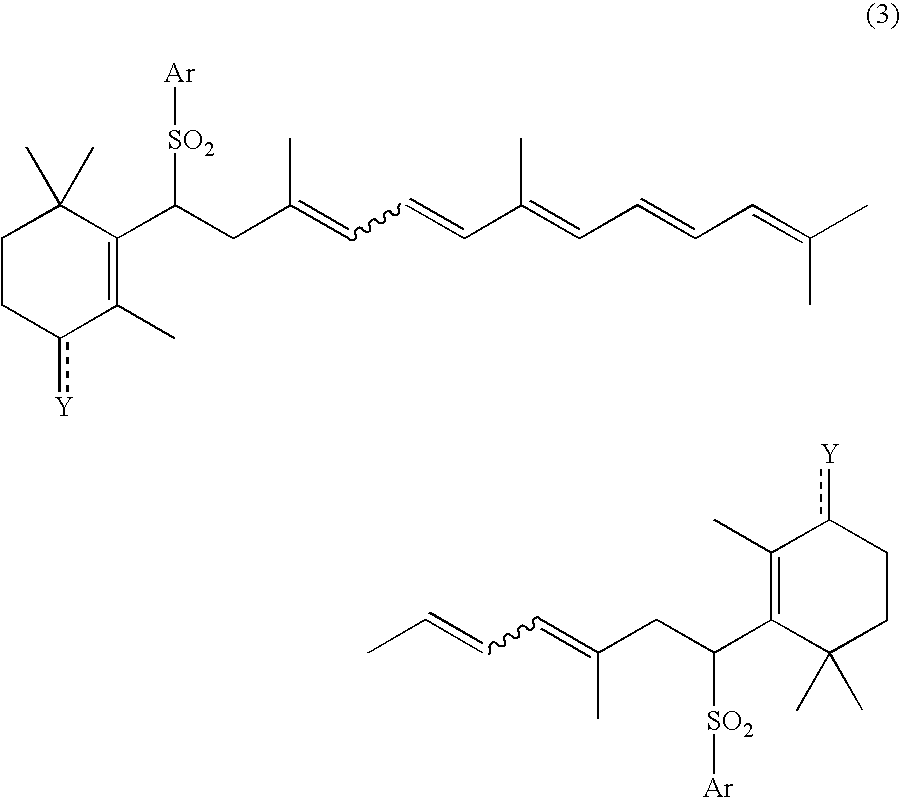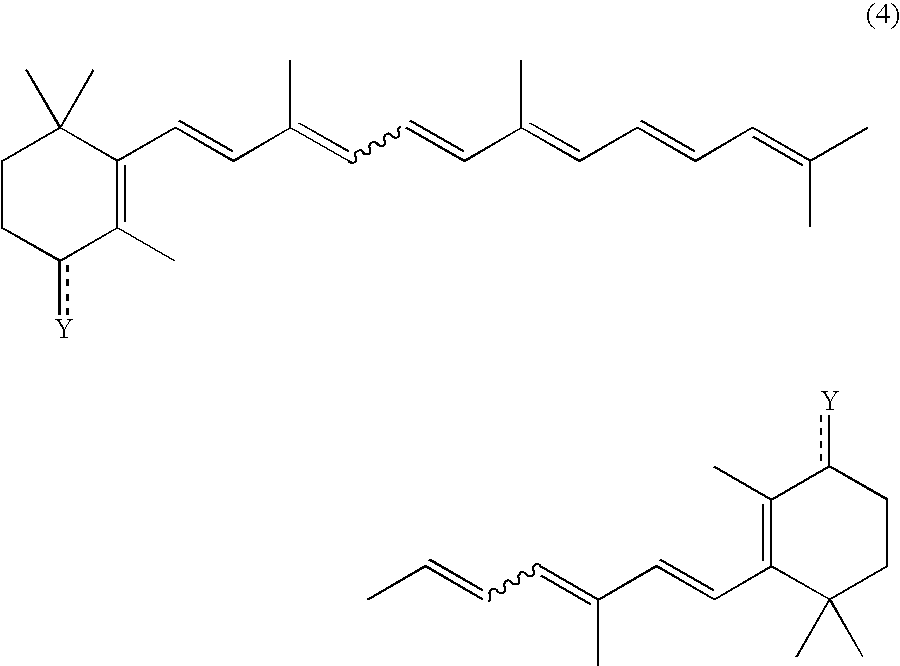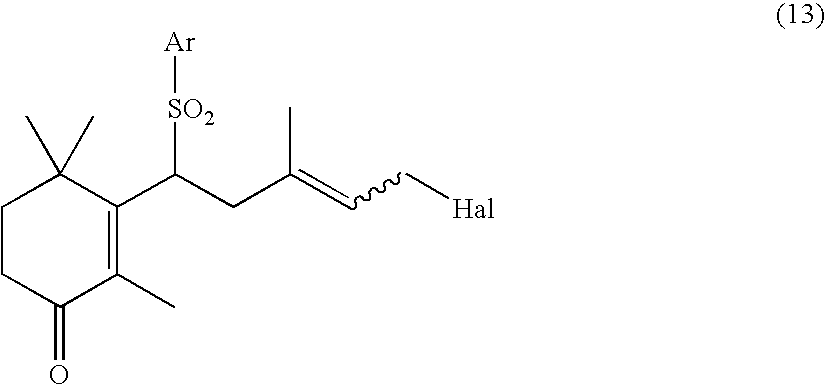Process for preparation of carotenoids
- Summary
- Abstract
- Description
- Claims
- Application Information
AI Technical Summary
Benefits of technology
Problems solved by technology
Method used
Image
Examples
example 1
[0075] The cyclic sulfone compound (XIV) (18.28 g, 62.5 mmol) was dissolved in a mixed solvent of acetonitrile (300 ml) and water (30 ml). To this solution was added N-bromosuccinimide (16.7 g, 93.8 mmol) at room temperature. After stirring the mixture at the same temperature for 30 minutes, N-bromosuccinimide (11.1 g, 62.4 mmol) was further added thereto and the mixture was stirred for 7 hours. After addition of N,N-diethylaniline (25 ml), an aqueous 5% sodium sulfite solution (150 ml) was added and the mixture was extracted three times with diethyl ether. The resultant organic layer was washed with successive, 1 M hydrochloric acid, water and saturated saline, dried over MgSO.sub.4 and concentrated to obtain a crude product. The crude product was purified by silica gel column chromatography to obtain the cyclic ketosulfone compound (I) in a yield of 49%.
example 2
[0076] Sodium t-butoxide (0.59 g, 6 mmol) was dissolved in DMF (15 ml) and to the solution was added a solution of the cyclic ketosulfone compound (I) (1.532 g, 5 mmol) in DMF (10 ml) all at once at -20.degree. C. After one minute, a solution of the allyl halide. (II) (1.2983 g, 6 mmol) in DMF (10 ml) was added dropwise thereto over one minute and the mixture was stirred at the same temperature for 2 hours. After completion of the reaction, an aqueous saturated NH.sub.4Cl solution was added thereto and the mixture was extracted with ethyl acetate. The resultant organic layer was washed with water and saturated saline, dried over MgSO.sub.4 and concentrated to obtain a crude product. The crude product was purified with silica gel column chromatography to obtain the ester compound (III) (1.414 g, 3.27 mmol, yield: 65.4%).
[0077] .sup.1H-NMR: .delta. (CDCl.sub.3) 0.98 (3H), 1.27 (3H), 1.34 (3H), 1.70-2.10 (2H), 2.04 (3H), 2.17 (3H), 2.47 (3H), 2.40-2.65 (2H), 2.65-2.85 (1H), 2.95-3.20 (...
example 3
[0078] The ester compound (III) (1.3715 g, 3.2 mmol) was dissolved in methanol (20 ml), an aqueous 2 M NaOH solution (2 ml, 6 mmol) was added thereto at room temperature and the mixture was stirred as such for 5.5 hours. After completion of the reaction, extraction was performed by addition of water and Et.sub.2O. The resultant organic layer was washed with saturated saline, dried over MgSO.sub.4, and concentrated to obtain the alcohol compound (IV) (1.1366 g, 2.91 mmol, yield: 91%).
[0079] .sup.1H-NMR: .delta. (CDCl.sub.3) 1.00 (3H), 1.26(3H), 1.33(3H), 1.60-2.05 (3H), 2.17 (3H), 2.46 (3H), 2.30-2.60 (2H), 2.65-2.75 (1H), 2.95-3.10 (1H), 4.00-4.10 (1H), 4.10-4.30 (2H), 5.30-5.60 (1H), 7.30-7.40 (2H), 7.70-7.90 (2H).
PUM
| Property | Measurement | Unit |
|---|---|---|
| Length | aaaaa | aaaaa |
Abstract
Description
Claims
Application Information
 Login to View More
Login to View More - R&D
- Intellectual Property
- Life Sciences
- Materials
- Tech Scout
- Unparalleled Data Quality
- Higher Quality Content
- 60% Fewer Hallucinations
Browse by: Latest US Patents, China's latest patents, Technical Efficacy Thesaurus, Application Domain, Technology Topic, Popular Technical Reports.
© 2025 PatSnap. All rights reserved.Legal|Privacy policy|Modern Slavery Act Transparency Statement|Sitemap|About US| Contact US: help@patsnap.com



